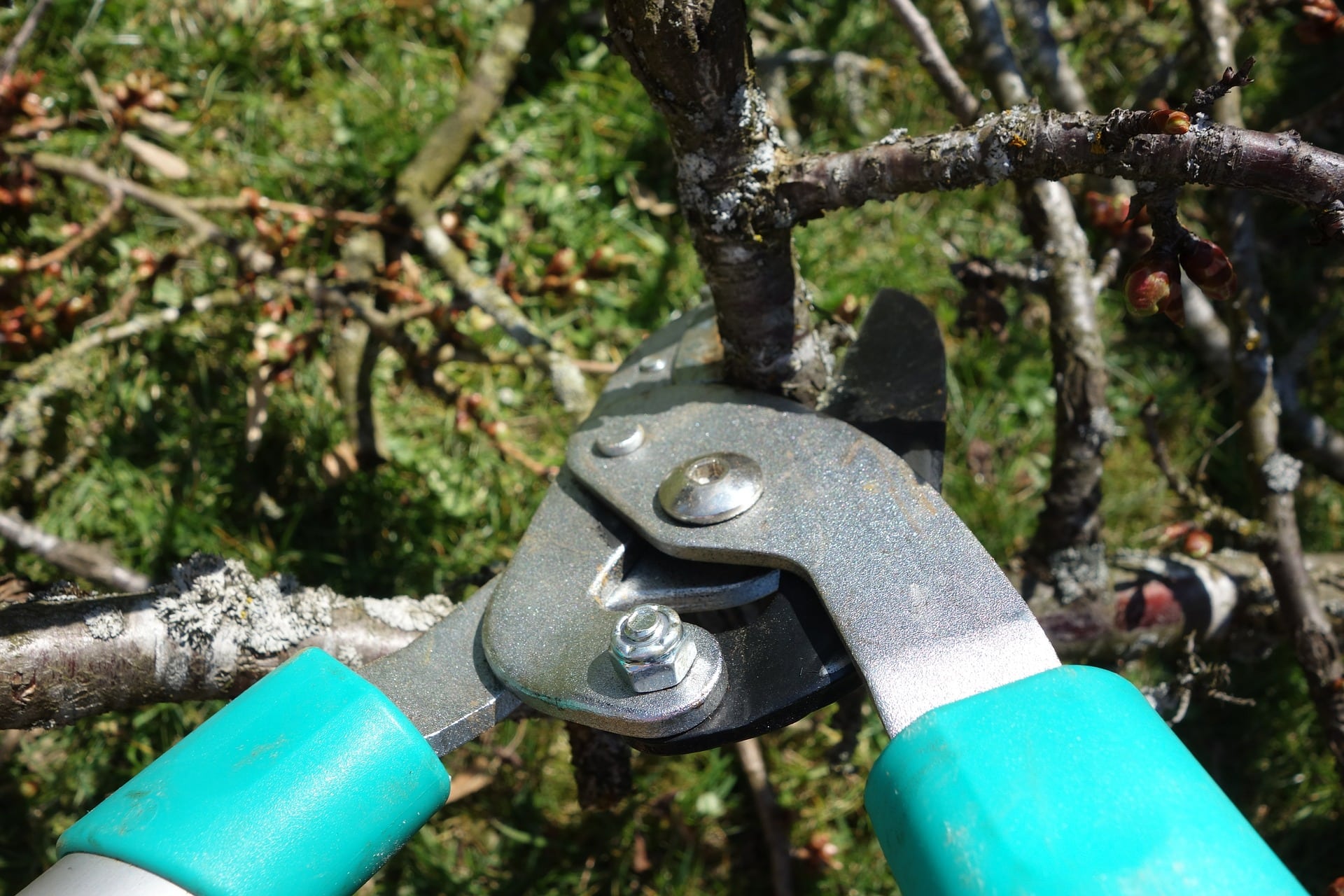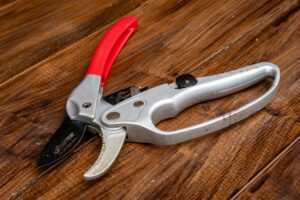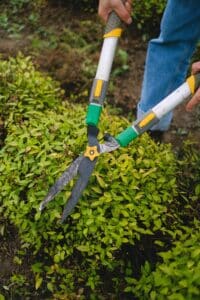
Trees and shrubs are not growing and dormant so it’s the best time to prune. You are doing easy, manageable pruning. Leave the extensive, large scale pruning to later in the season or to an expert (arborist). Good pruning keeps your trees and shrubs attractive, healthy and less susceptible to injury or disease.
- What to Prune in the Winter: Summer and fall bloomers are what you’re pruning in winter. If they bloom in the spring (for example: lilacs, forsythia, magnolia, azalea, rhododendron, etc.) they should NOT be pruned in the winter. If you prune spring bloomers in winter, you will cut off the formed blooming buds. Spring bloomers should be pruned right after blooming.
- Purpose: Look at the overall natural form, dead or broken branches, smaller noticeable problems, mowing problems (low branches) or extensive/large-scale pruning. Remember, you are doing easy, manageable pruning.

- Tools: Eye protection, gloves, sharpened hand pruners, lopping shears or hand pruning saw. Tools should be sharpened because a crunched cut can cause more damage or disease problems later than a sharp cut. Also clean your tools (spray bottle solution of 2 Tbsp. rubbing alcohol and 1C water) so you don’t carry diseases from one plant to another.
- Take Your Time: The rule of thumb in pruning is to only prune off 1/3rd of the overall plants. More than that may put undue stress on a tree/shrub; it may not recover. Stop occasionally and step back to look at what you’ve done and where you will be pruning next.
PRUNING CHECKLIST: Cuts need to be just above the branch collar and on an angle. Angle cuts prevent water collecting and prevent disease at the cut.
- First Cuts: Take out any damaged, dead or diseased Cuts are to be to a bud or healthier branch. Prune out damaged or broken branches. Dead branches are harder to see in winter. Look for dull color on a branch which snaps rather than bends. If in doubt take your pruner and make a small cut into the branch. If the inside is green it’s alive, if brown it’s dead. Look for egg masses (tent caterpillars, gypsy moths, tussock moths) which are often visible in winter and remove them. Also look for unusual swellings, open lesions or darkened areas that could be signs of canker and disease.
- Second Cuts: Suckers or water sprouts are next to be pruned. Suckers are found at the base of the tree and need to be removed. Water sprouts are branches going straight up into the tree. Both hinder the natural look of the tree.
- Third Cuts: The fine tuning of pruning focuses on competing branches, lower limb problems and inside thinning for air flow. Competing branches are any branches rubbing on each other or smaller branches which eventually will cross others. Branches naturally grow upward so prune out any that have downward growth. Air flow in the middle is essential so thin out the inside branches. Mower problems need to be looked at as well. Removing those branches can make the overall look of the tree so much better.
Remember to work slowly, taking plenty of breaks to step back and look. Is the tree balanced? Does it look symmetrical? 
Suggested reading:
- Pruning And Care Of Trees And Shrubs prepared by F.A. Giles
- The Pruning Book by Lee Reich
- The American Horticultural Society Pruning and Training by Christopher Brickell and David Joyce